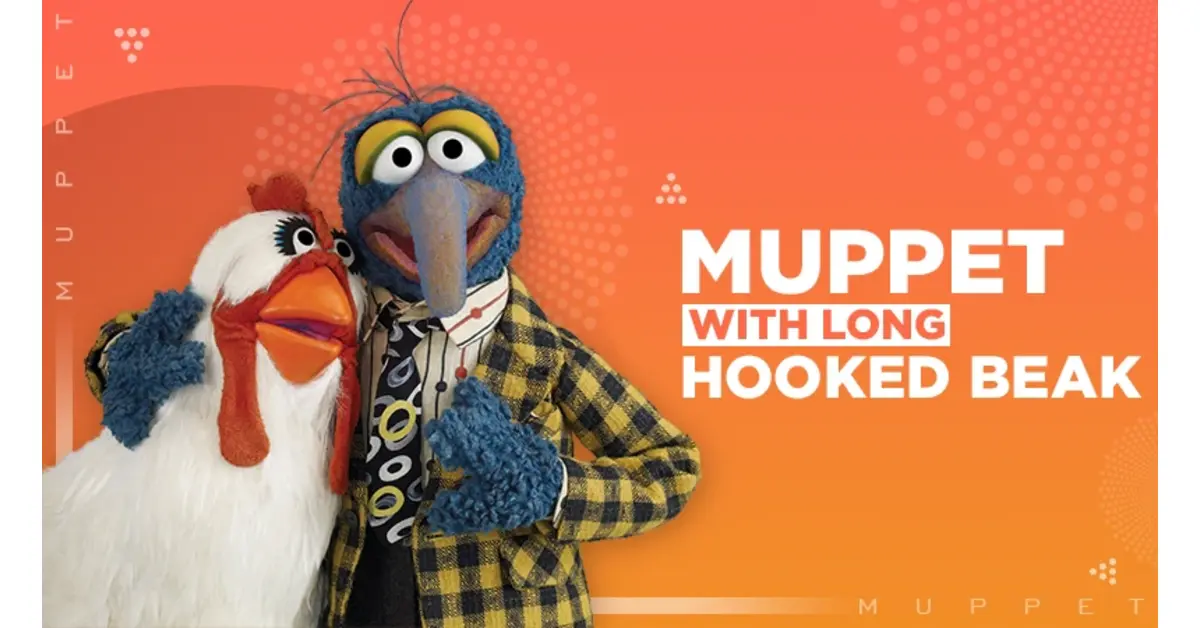The Muppets, created by the legendary Jim Henson, have delighted audiences for decades with their quirky personalities and iconic designs. Among these memorable characters, one particular figure stands out—a Muppet With Long Hooked Beak. This unique trait sparks curiosity and adds to the diverse lineup of creatures that make up the Muppet family. In this article, we’ll dive deep into the history, design, and cultural impact of this distinct character.
Table of Contents
ToggleWho Is the Muppet with the Long Hooked Beak?
Muppet With Long Hooked Beak feature many unique designs, the character with the long hooked beak most often evokes comparisons to avian species. This Muppet might remind fans of creatures like Sam the Eagle or Gonzo the Great, both of whom possess exaggerated features, though their beaks differ in length and curvature. Characters like these showcase the creativity of the Henson team, as they mix animal traits with whimsical exaggerations to create visually striking puppets.
Sam the Eagle: The Stoic Patriot
Sam the Eagle is a well-known Muppet with a prominent beak, though it is not overly hooked. His character is marked by his straight-laced personality and his commitment to promoting “culture and tradition.” Sam’s design includes a large, curved beak that reflects his eagle heritage. However, if you’re seeking a truly hooked beak, you might want to explore characters like Gonzo.
Gonzo the Great: The Daredevil with a Hooked Nose
Gonzo, often referred to as a “whatever,” is another potential candidate. Though his long hooked nose could be mistaken for a beak, his alien origins make him a one-of-a-kind creation. Gonzo’s design and personality—eccentric, daring, and absurdly funny—have made him a fan favorite.
Design Inspiration: The Origins of Hooked Beak Characters
The long hooked beak is a design element often associated with intelligence, mystery, or a touch of menace. In Muppet design, these features help give a character distinction and personality.
- Avian Influences: Many Muppets draw inspiration from birds, particularly species like hawks, eagles, and vultures. These birds have hooked beaks designed for tearing flesh, lending a sense of sharpness and precision to their design.
- Mythological Creatures: Hooked beaks also appear in mythology, often symbolizing wisdom or fierceness. Incorporating such features into a Muppet helps to imbue the character with a sense of history and intrigue.
- Whimsical Exaggeration: Jim Henson’s team often exaggerated real-world traits for comedic or emotional effect. A hooked beak might seem intimidating in real life, but when attached to a puppet, it can become endearing or hilarious.
Why Do Fans Love the Hooked Beak Design?
The Muppet with a long hooked beak resonates with fans for a variety of reasons. Here’s why this design element remains popular:
- Unforgettable Aesthetic: The elongated, curved shape of a hooked beak is eye-catching and immediately sets a character apart.
- Symbol of Personality: In Muppets, every physical feature is an extension of the character’s personality. A hooked beak might suggest a sharp wit, eccentricity, or an enigmatic nature.
- Nostalgic Appeal: Characters like Gonzo and Sam the Eagle bring fond memories of watching “The Muppet Show” or “The Muppet Movie,” creating a lasting emotional connection with fans.
Cultural Impact of Hooked Beak Muppets
Muppets have always reflected cultural archetypes and tropes. The hooked beak, in particular, has taken on various meanings depending on the character it represents.
- Comedy and Absurdity: Gonzo, with his exaggerated nose resembling a hooked beak, uses his design for comic effect. From stunts to slapstick routines, his appearance amplifies the humor.
- Authority and Seriousness: Sam the Eagle’s hooked beak and stern demeanor symbolize authority and tradition. His character pokes fun at bureaucratic rigidity, offering a satirical edge.
- Mystery and Intrigue: Less mainstream Muppets, such as obscure bird-like creatures in Henson productions, often use their hooked beaks to appear otherworldly or mysterious.
The Role of the Hooked Beak in Puppet Storytelling
In puppet design, every feature serves a purpose. The long hooked beak is more than a quirky aesthetic; it’s a storytelling device.
- Conveying Emotion: A hooked beak can curve into a frown, smile, or inquisitive expression, making it versatile for conveying emotions.
- Enhancing Movement: Puppeteers often use exaggerated facial features to add drama. A hooked beak can bob, sway, or peck in ways that capture attention.
- Creating Contrast: Among the Muppets’ vibrant and varied cast, a character with a long hooked beak creates visual diversity, standing out while complementing other designs.
Famous Appearances of Hooked Beak Muppets
Over the years, Muppet With Long Hooked Beak have appeared in several iconic productions:
- “The Muppet Show” (1976–1981): Sam the Eagle was a recurring character, delivering humorous monologues about morality and culture.
- “The Great Gonzo” Stunts: Gonzo’s daredevil antics often highlight his nose (or beak), making it an integral part of his performance.
- “Muppets Tonight” (1996–1998): Both main and background characters with bird-like features added to the variety and richness of the cast.
The Legacy of the Hooked Beak Muppets
The hooked beak is a testament to Jim Henson’s innovative approach to character creation. By blending animal traits with exaggerated, imaginative designs, Henson and his team redefined puppetry, making it both humorous and emotionally resonant.
- Merchandising and Collectibles: Characters like Gonzo and Sam have inspired countless toys, apparel, and memorabilia. Their distinct features make them instantly recognizable.
- Fan Creativity: Hooked beak Muppets inspire fan art, cosplay, and creative reinterpretations. Fans continue to celebrate these characters in unique ways.
Educational Impact: The Muppets’ ability to teach lessons through humor and distinctive designs ensures that hooked
Ensemble Health Partners: Revenue Cycle Management in Healthcare


